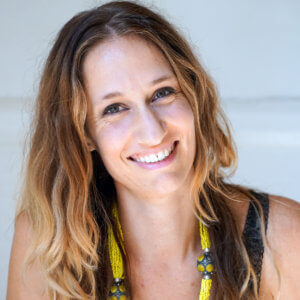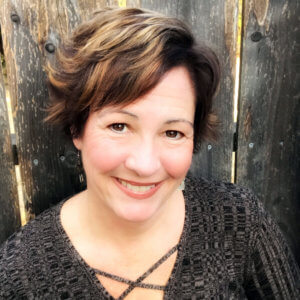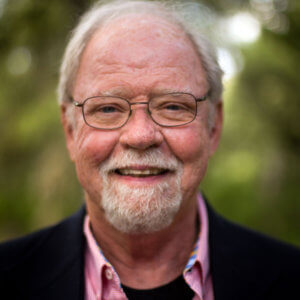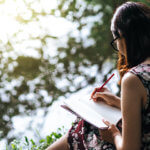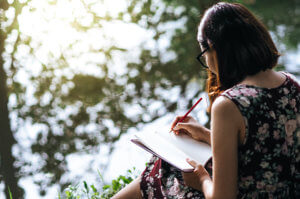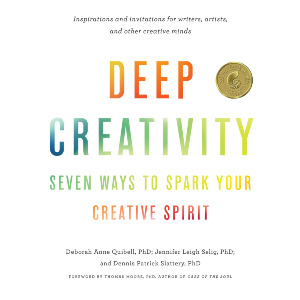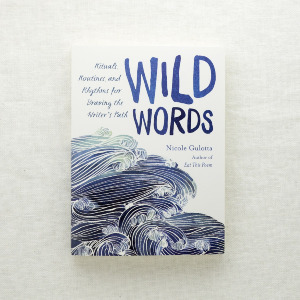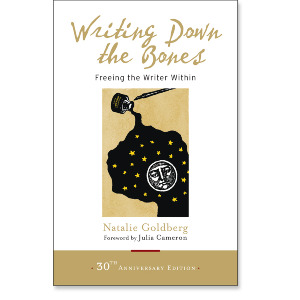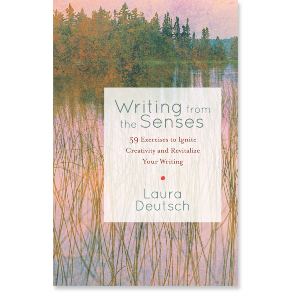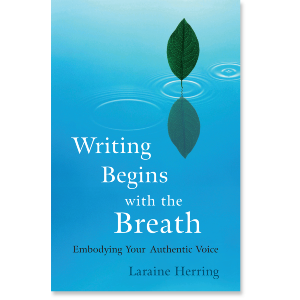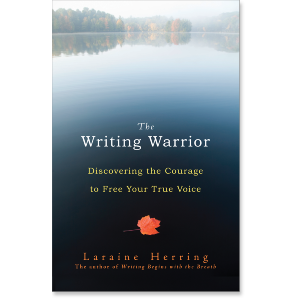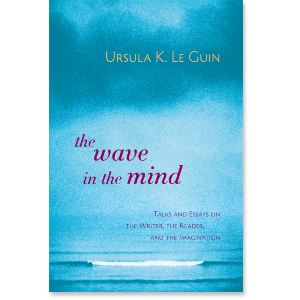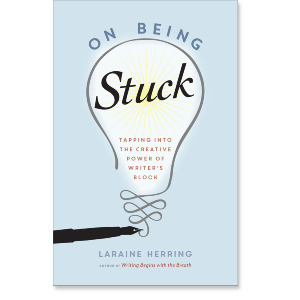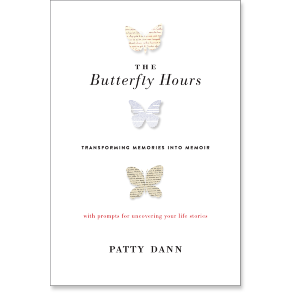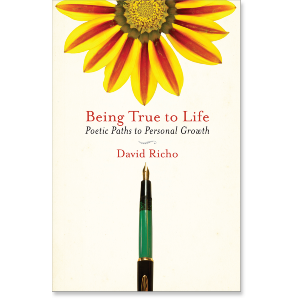Three Creativity Exercises from the Authors of Deep Creativity
Grounded in Jungian psychology, Deep Creativity offers practical guidance for getting in touch with your own unconscious reservoir as well as engaging your everyday world to deepen the source of creative expression. Wherever one is on the creative path—a beginner or established creative—this book offers not only practical workbook-like exercises but is also a contemplation on the creative process itself. Please enjoy these three writing exercises from the book. We hope they will help to spark your creative spirit!
Deborah invites you to this practice.
THE ESSENCE OF SLOWING DOWN
Creativity comes alive when our senses of hearing, taste, sight, smell, and touch are awakened and revered. And realizing the immense gift of our full sensing body often demands slowing down, getting quiet, and becoming deeply aware. The senses are our raw creative data and material. We are called then, as artists, to reconnect to our own animal nature, our own animal body first. To wake up to ourselves as a sensing organism, living amidst other sensing organisms.
This practice invites you to slow down and connect with your body, with your own animal nature, before you enter into your creative practice. It doesn’t have to take long, less than five minutes, but you may find that you begin your practice more mindful and stimulated with the raw creative data that the senses evoke.
SIGHTBegin by taking a 360-degree look around your environment. Notice what’s in front of you, what’s behind you, and what’s to each side. Notice all the color surrounding you. Notice the objects in your space and make sure they feed your creativity, not distract you from it. Look for anything that wants to be moved in or out of your line of vision.
HEARING Focus your attention on what you can hear when you enter your creative space. Is it silence, or the whir of a space heater at your feet? Is it the cacophony of traffic, or the white noise from a nearby freeway? Can you hear birds singing, or the television set droning in an adjacent room? Once you have established what you hear, ask yourself what you might like to hear that could enhance your creativity. If it’s silent in your space, perhaps you’ll want to play soft music. If it’s cacophonous, perhaps you’ll want to turn on a calming water fountain. If you’re focusing on right-brain, image-related creativity, perhaps you’ll want to play an audiobook or a podcast to stimulate your left brain too.
The senses are our raw creative data and material.
TOUCH Feel the clothing against your skin. Feel the temperature that surrounds you. Feel your fingertips, warm your hands, thank them for the work they are about to do. Run your fingers across your keyboard, over your desk, around your instrument. Raise your paintbrush to your cheek and feel the hairs of the brush lightly tickle you. Sink your hands into the soil and feel its grainy texture. Pat the cat that sits on your drafting table and feel the thrum of her purr. If you feel any anxiety about creating, find something to touch that soothes or put on a piece of clothing that comforts.
SMELL How does the air smell in your creative space? Does it smell musky, like it could benefit from an open window? Does it smell too much like your husband’s cologne or your wife’s perfume and thus distract? Does the air surrounding you make you want to inhale deeply, getting more oxygen into your creative brain? Might you want to scent your surroundings with a candle or incense? If you are writing about the ocean or painting a rose, consider bringing in smells to evoke the experience. Having a collection of essential oils may be just what you need to stimulate your creativity.
TASTE What do you taste in your mouth as you enter into your creative space? Did you just finish breakfast, so it’s the taste of warm butter on toast? Did you just brush your teeth, so you taste wintery fresh? Ask yourself, “What taste would stimulate my creativity right now?” Perhaps it’s a rich cup of coffee made from Costa Rican beans. Maybe it’s a grassy glass of New Zealand sauvignon blanc. Maybe it’s a stick of Big Red gum that reminds you of your childhood. Bring that taste into your space and pair it with your creativity.
Now your fully sensing (and sensitive) body is fully present to you, is fully present with you. See what creating from this space feels like and how this practice might affect your work.
Jennifer invites you to this practice.
CODE OF NO, OR NO COMMANDMENTS
I believe most of us as creatives want to say yes to our creativity more often, to give ourselves more time and space to follow our creative impulse, as Deborah calls it. Our creative instinct, if it’s strongly held within, is to just say yes. For this reason, I find saying no to be a more psychologically rich practice and also more psychologically challenging. That’s why I want to suggest creating a Code of No, or a set of No Commandments.
This practice is easy on the surface. Creating a Code of No simply means writing down your own rules for when you will say no to something that will keep you from saying yes to your creative project/s at hand. In my essay, I list three that are challenges to me: “I will say no if I’m just saying yes to people please.” “I will say no if I’m putting someone else’s needs before my own, all things being equal.” “I will say no to any activities that do not make me feel as fulfilled as creating does.” Or, if you like the conceit of commandments, write yourself up a list of ten or so No Commandments, your own personal “thou shalt nots.” I gave three examples: “Thou shalt not make any plans on Tuesday and Thursday evenings so you can draw.” “Thou shalt not indulge your family’s requests for dinners out until after you have saved enough for your new camera.” “Thou shalt not take your cell phone into the workshop when you are working on your projects.”
Try to understand more deeply why we sabotage our own creativity, why we are impelled at times to say yes to others and no to ourselves.
Think of these lists as your creative manifesto. Keep them handy, not only in your creative space but in all spaces where you’re likely to be challenged by the requests of others (in your phone, by your computer, on your desk at work, etc.). You may push the practice further by doing a weekly check-in. At the end of each week, look back over any codes or commandments you might have broken and ask yourself why. And when I say above that this practice is easy on the surface, this is where it gets more psychologically challenging, as we try to understand more deeply why we sabotage our own creativity, why we are impelled at times to say yes to others and no to ourselves.
If you don’t like the emphasis on no here, you can do the same practice in the affirmative. Write a Code of Yes, or your Yes Commandments. Or better yet, write both. Really flesh out the reciprocal relationship of yes and no to your own creative fulfillment.
Dennis invites you to this practice.
OPENING DOORS FROM AN OBLIQUE ANGLE
One practice of which I am particularly fond is coming at my subject matter from an oblique angle. This is the opposite of what feels more intuitive—to come at something straightforwardly. For example, if I am painting a sunflower and feel stuck, resistant, or uninspired, it makes sense that I’d go online perhaps, and google paintings of sunflowers, seeing how others have captured what I am struggling to do myself. And that might work. But what it might also do is work against me. I may find myself comparing my work to others and feeling like I don’t have a tenth of the talent they do. It might make my work derivative, too much like theirs, not enough like mine. It might make me doubt that the world needs another painting of a sunflower when there are already so many good ones. It’s risky, this kind of comparison, but it might also allow me a new way to reconnect with my subject matter I had not considered before.
There are two ways we can come at this problem from an oblique angle. One is to approach it through an oblique medium or discipline. Perhaps I’ll google poems about sunflowers instead or find songs with sunflowers in their lyrics. Perhaps I’ll approach sunflowers from the discipline of the sciences and read descriptions of them in a botany book. Another approach is through an oblique subject matter. Leave sunflowers entirely; perhaps I’ll look at images of roses instead, or maybe I’ll read all about bees and how they pollinate flowers. Maybe I won’t even be that directive at all. Perhaps I’ll simply acknowledge I’m resisting this painting, and I’ll go to my bookcase and pull a random book off the shelf, with the intention that any reading I do within that book will provide me with just what I need to proceed with my project.
I invite you to try both oblique angles next time you find yourself facing creative resistance of any kind. Or, if there’s a project you’ve left unfinished—a dress you were making, a piece of furniture you were building, a graphic novel you were creating—return to that project now and try approaching it from an oblique angle. See what doors may open for you then.
Share
Related Books
$24.95 - Paperback
$17.95 - Paperback
$16.95 - Paperback
$14.95 - Paperback
Writing Begins with the Breath
$19.95 - Paperback
$19.95 - Paperback
$22.95 - Paperback
$22.95 - Paperback
$16.95 - Paperback
$16.95 - Paperback
$21.95 - Paperback
